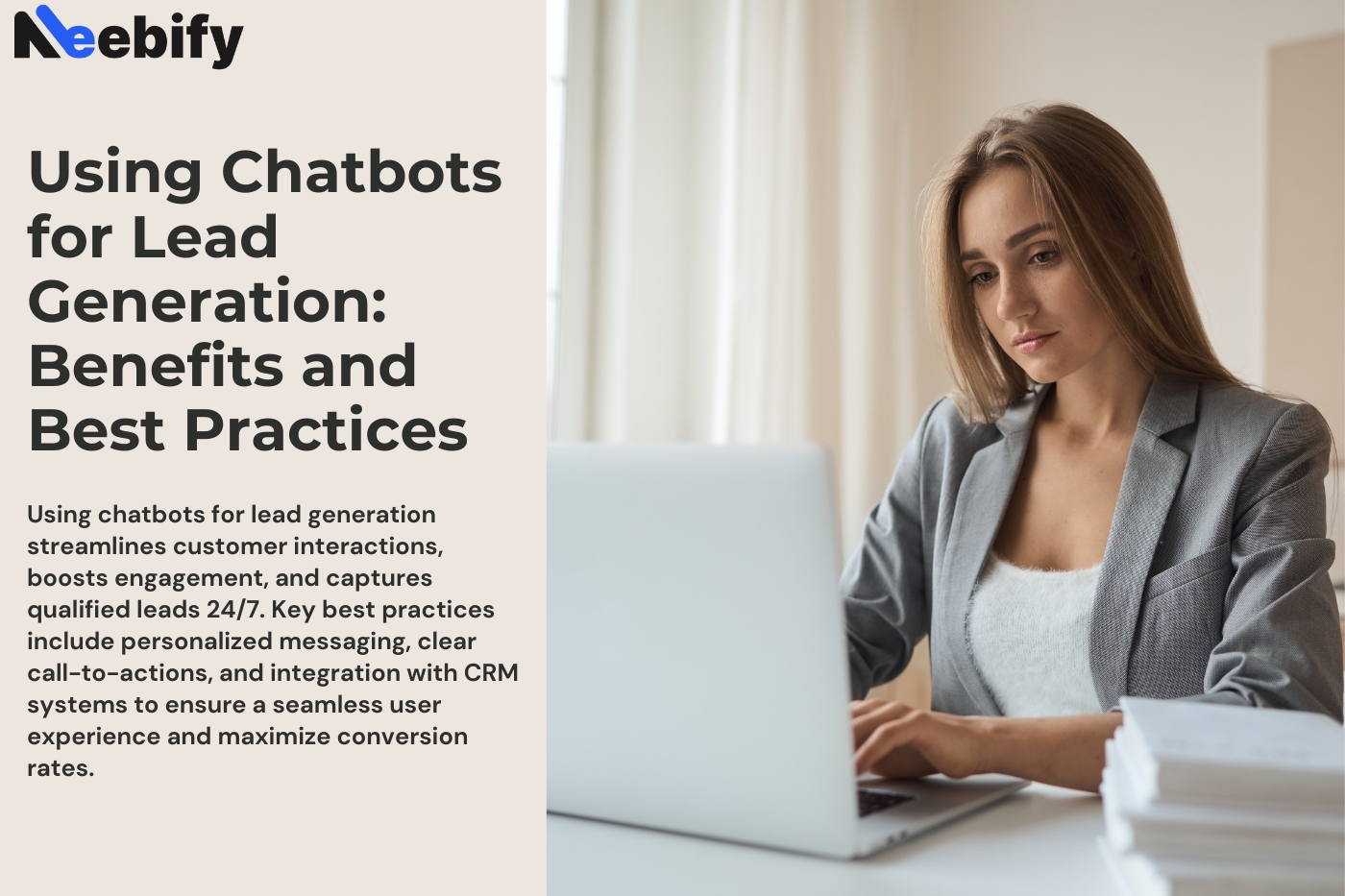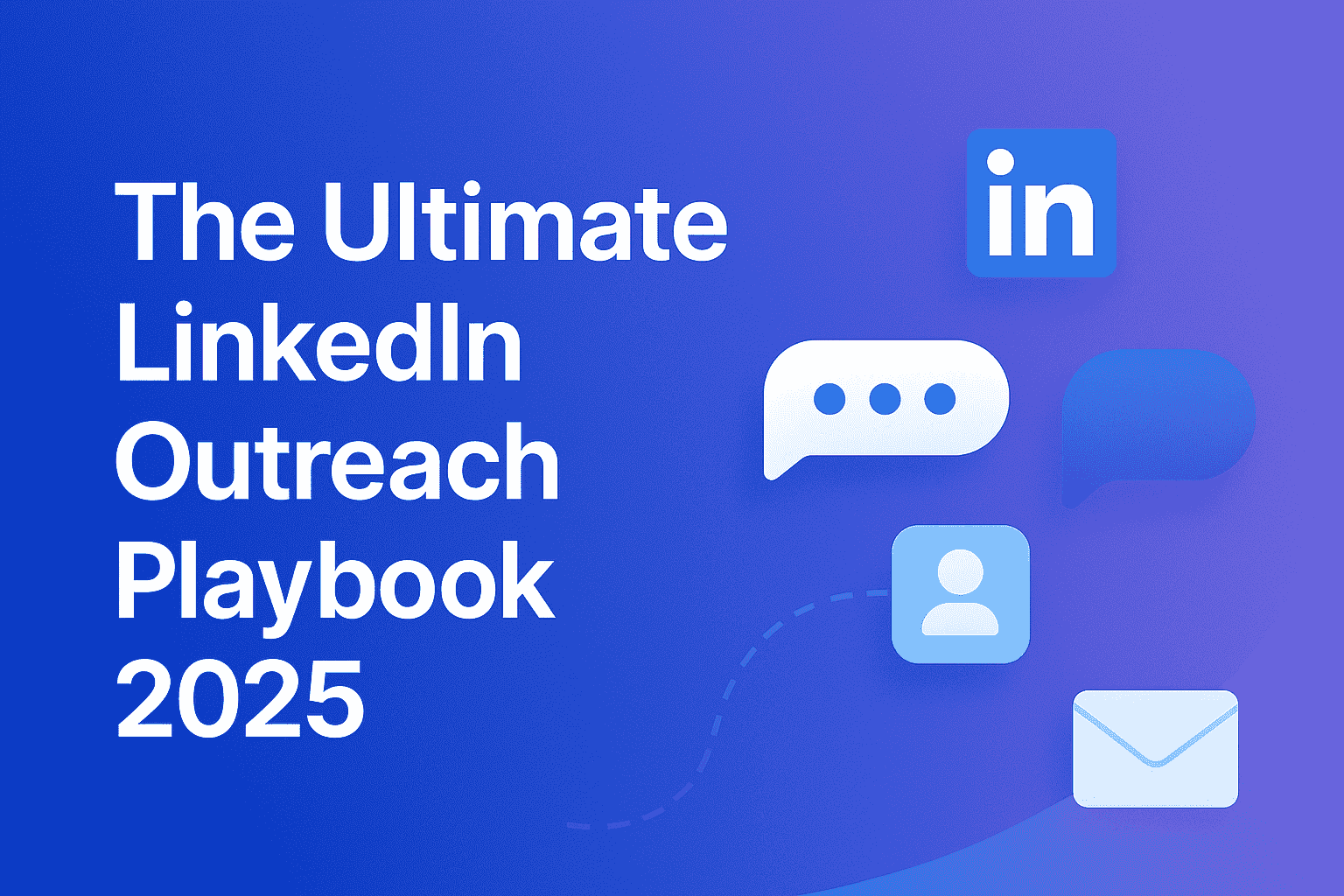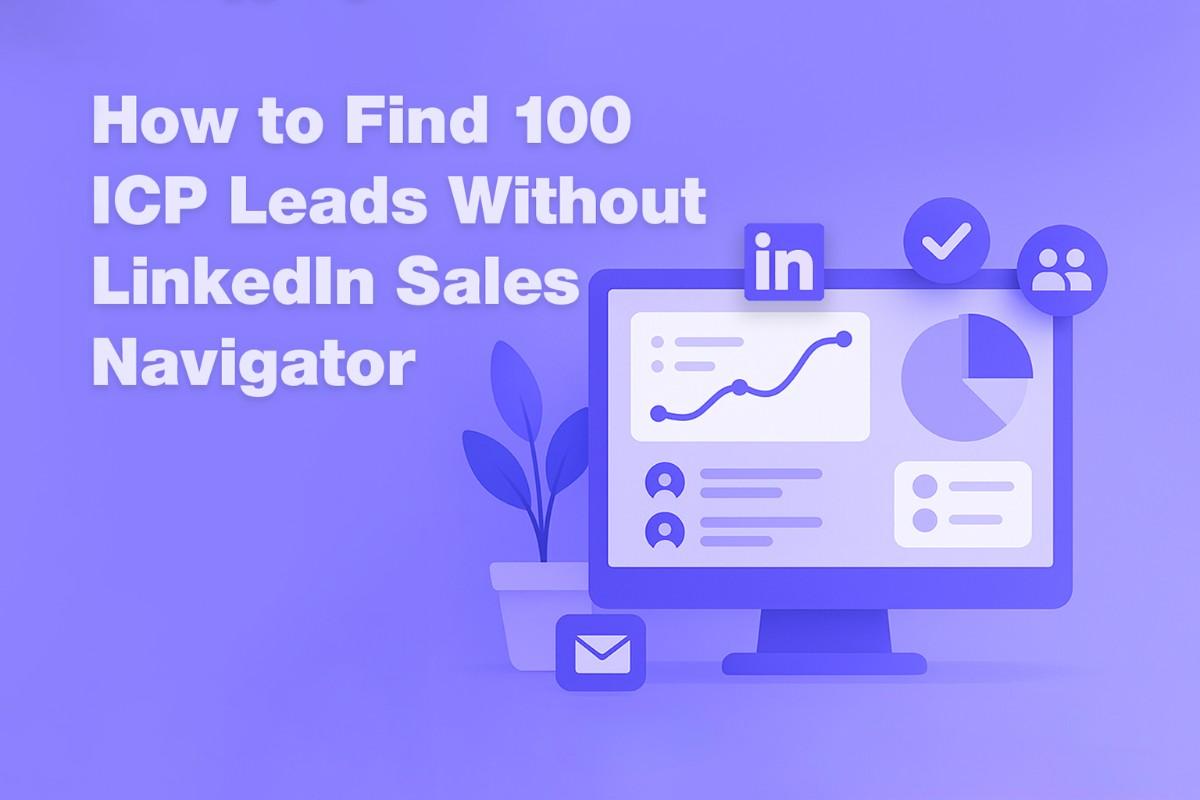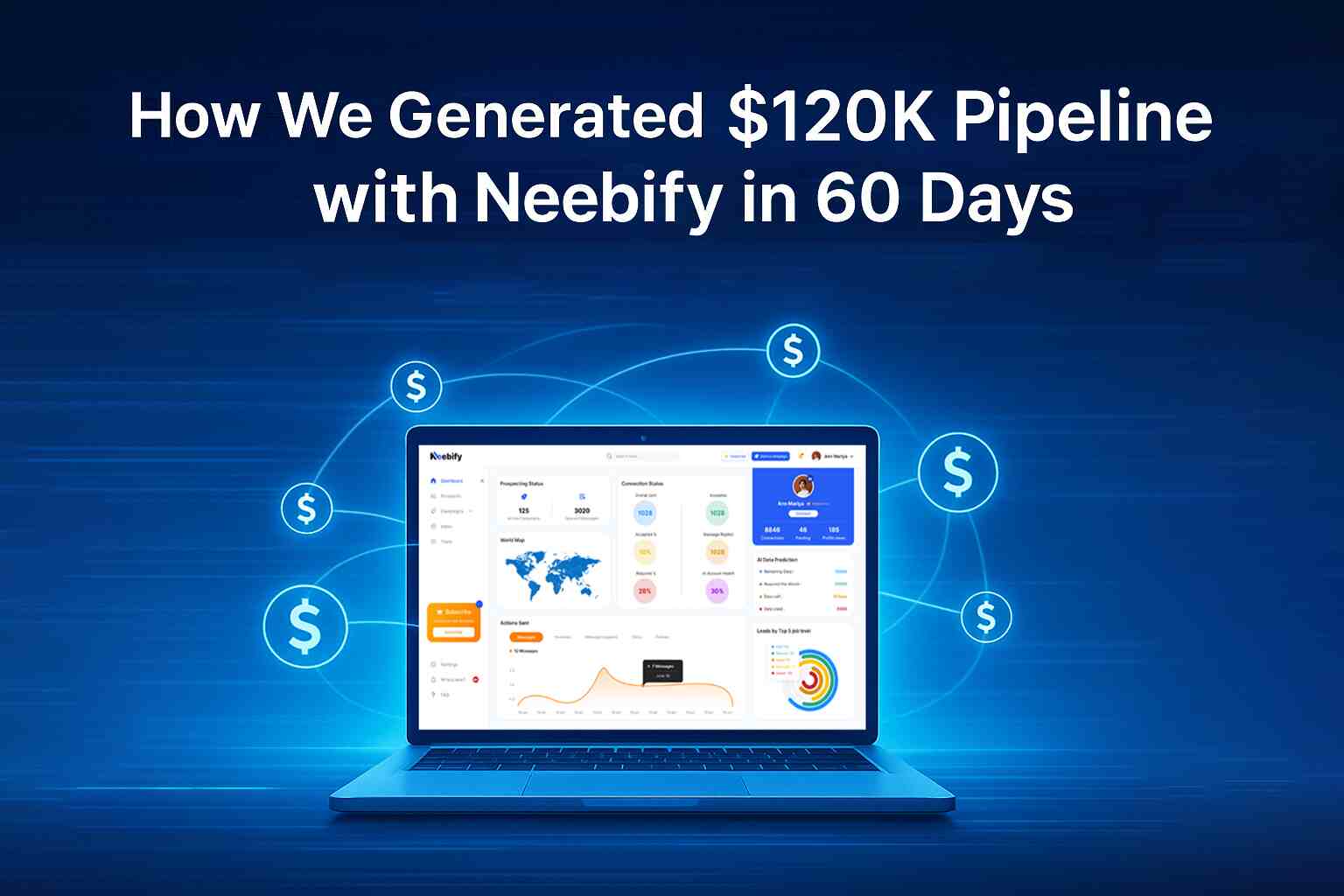Table of content
Lead Generation Using Chatbots
Lead generation is the lifeblood of any business: it's the process of identifying potential customers and progressively guiding them to the sales funnel. Traditionally, it required loads of manual effort for aspects like cold calling, email campaigns, and in-person networking, but the job is made much easier with the developing artificial intelligence and automation-based chatbots.
Chatbots are AI-powered software applications purposed with conducting human-like conversation over websites, socials, messaging apps, and various other digital interfaces. They can interact with potential customers to answer their questions, capture necessary contact information, qualify leads based on it, gain insights into the leads' interests, and stages at which they are in the buying process.
Unlike human agents, chatbots are here 24/7 to provide instant response to the customer's inquiry. This ensures that businesses are able to capture leads at all times, even those outside regular hours of operation. Furthermore, chatbots can have many conversations simultaneously, making it a scalable solution for businesses with high traffic volumes on their website.
Versatility of chatbots allows them to be used for multiple scenarios. Some of the critical ones, especially with chatbots that are used to generate leads, can be explained as follows:
1. High Website Traffic
Chatbots can be useful in answering human questions in a large number of customers. This allows for the management of several conversations at once without neglecting a potential customer; this could be of significant help to e-commerce sites, SaaS platforms, service providers, etc. where customers make pre-buying queries quite frequently.
2. 24/7 Customer Interaction
In today’s worldwide market, people can be from many time zones. But you can use a chat to talk with visitors when your team is not working. It is good to get leads or know the answer to questions customers may have. This is very important for businesses that want to do business in other countries or reach people from many countries.
3. Pre-Qualifying Leads
Not all website visitors are in the purchasing stage; some are just browsers and others just investigating the possibilities, chatbots qualify these leads beforehand. By asking focused questions, it tries to decipher their needs and interests. This way, it ensures only qualified leads get sent over to the sales team, hence saving time and resources.
4. FAQs
There are questions common for most potential customers: the price of products, their features or return policy. A chatbot can be programmed to instantly provide answers to common FAQs so that users receive the needed information. In turn, this increases the chance to capture leads and hence strengthens the user experience.
5. Lead Nurturing
Nurturing leads to sale by engaging them with relevant content from blog posts, case studies, or product demos. It can offer the additional detail needed to present interestful information to engage leads at the different stages of the sales funnels.
How can Set Up a Chatbot for Lead Generation?
Setting up a chatbot for lead generation goes through various steps, such as platform selection, conversation flow design, and integration with a CRM. Here's a step-by-step guide:
1. Define your goals
Begin by saying what you intend to accomplish using a chatbot. What exactly do you want the chatbot to accomplish—capture emails, set up appointments, give product recommendations? A defined goal will help you design a chatbot that meets your interest in lead generation.
2. Select Your Platform of Choice
There is a lot of chatbot software out there, and they do tend to differ in every respect in terms of features and other capabilities.
Some popular options include:
ManyChat: Good for Facebook Messenger bots, with an easy-to-use interface and useful integrations.
Chatfuel: Known for driving conversations to be AI-based for crafting experiences of conversational chatbots.
Tars: Allows you to build chatbots on all major messaging platforms and web and social channels.
Drift: For high-level targeting and personalization in lead generation.
Choose one that best suits your business needs and that can be integrated with your other tools, like your CRM or email marketing software.
3. Design the flow of the conversation
The conversation flow is the center of your chatbot. Conversation flow shows how chatbot talks to the site visitors and collects their information. Create a few different conversation scenarios depending on the response obtained from the visitor.
For an instance,
Greeting: The chatbot must open up with a positive and welcoming greeting.
Questions: Via a conversation with the visitor, the chatbot can ask a few questions that will enable the collection of information and, at the same time, qualify the lead.
Offer: A chatbot can offer a user a free trial, discount, or product demo, among others.
Call to Action: End the conversation with a strong call to action that pushes the visitor to the next step in your process, be it to sign up for a newsletter or book a consultation.
Use branching logic via AI to deliver a distinctive experience based on the visitor. For example, one with an intent to understand the details about pricing the services can be routed to a pricing page, but another one with similar intent can be routed to customer support.
4. CRM Integration
For effective lead nurturing, the chatbot should be integrated with a CRM system. Once the user interacts with the bot and shares contact information, this then gets automatically entered into the CRM. Thus, your sales team will have a chance to follow up the lead quickly and monitor the lifecycle in the sales funnel.
Most of the chatbot platforms offer integrations with most of the common CRM systems, like Salesforce, HubSpot, and Zoho CRM. Ensure the integration is well-set to capture all lead data and sync it in real-time.
Before going live, test your chatbot to the maximum potential so that it operates as designed. Run different test scenarios to identify and fix the associated bugs or errors. Here, you'll want to ensure that your chatbot is capturing lead data correctly and conversation flow is smooth and intuitive.
After deploying the chatbot, monitor its performance proactively, and if needed, make adjustments. Using the analytics tools, you will be able to monitor a few of the main parameters—number of conversations, leads captured, and conversion rates. This data will allow you to continuously improve your chatbot to drive better results down the line.
What Are the Benefits of Integrating Chatbots for Lead Generation?
Chatbots have many benefits that can be very effective in enhancing the lead generation process. A few of the key benefits are:
1. Scalability
Since chatbots can process thousands of ongoing dialogues concurrently, they form a scalable solution regardless of the size of the business. Whether you own a small website that receives fewer visitors or an e-commerce site with millions of visitors, a chatbot can really communicate with each one of the visitors instantly without any delay.
2. Cost-effective
On the other hand, in-house teams for customer service involve a lot of expenses in hiring and training. Chatbots, on the other hand, are a one-time investment that can continuously give support and give flesh to the leads without added labor costs.
3. Availability
Chatbots don't need breaks, sleep, or time off like human agents do. They are always available, 24/7, allowing you to capture leads at any time of day or night.
4. Personalization
A Chatbot can be developed for an individual experience based upon more information about the behavior of visitors and their preferences. Engage more by offering relevant content and offers with the help of chatbots to increase the probability of converting a lead into a customer.
5. Enhanced User Experience
At any point when a visitor makes any sort of inquiry, chatbots provide instant answers, which will make the user experience of your website better. This will be very helpful for lead captivating, but it will also have a positive impact on customer satisfaction and loyalty.
6. Data Collection and Analysis
Chatbots can gather important visitor data on their behaviors, preferences, and pain points, which can go a long way in tweaking one's lead-generation process and making the overall marketing process better.
Chatbot Lead Generation Best Practices
To make effective use of chatbot-generated leads, the following are some of the best practices:
1. Make It Simple
Although it is tempting to create a complex chatbot that has numerous features, simplicity is usually key. Keep the conversation flow simple and well understood. Simple and clear answers followed by visitors are more likely to engage with a chatbot.
2. Personalize the Experience
Personalize the conversation with the information obtained from the chatbot. For example, if a visitor mentioned that they were interested in a particular product, the chatbot will give the visitor information about the product and an associated promotion.
3. Provide Instant Value
Want to convince visitors to provide their contact details? Provide a useful incentive quickly. Create a relevant discount, e-book, or content to show that what you offer is valuable to them.
4. Follow Up
Capturing a lead is only half the battle. To be really effective at transforming that captured lead into a genuine paying customer, you have to be really quick with follow-up. Schedule an email, phone call, or other follow-up through your CRM system or directly with a salesperson.
5. Continuous improvement
The digital world is constantly evolving, and so too are your chatbots. It must be adjusted and modified using feedback and performance data from consumers on an ongoing basis. Multiple types of conversational parameters, engagements and segmentation should be tested in order to find what makes your audience respond the best.
Conclusion
Chatbots change the way businesses approach lead generation. The use of chatbots for instant, personalized interactions can help capture and qualify leads more effectively in comparison to conventional methods. Whether it is a small business aiming at engaging the visitors to its website or a large enterprise wanting to scale up lead generation, chatbots offer an affordable, flexible, and scalable solution for the same. By applying the best practices in this guide, you'll set up a chatbot that not only captures but nurtures leads into loyal customers.
Get your next meeting in a
matter of minutes.
Free Trial
Latest
The Ultimate LinkedIn Outreach Playbook 2025
A practical, modern guide to mastering LinkedIn outreach in 2025 — learn how to boost reply rates, p
12/1/2025How to Find 100 ICP Leads Without LinkedIn Sales Navigator
Generating 100 targeted ICP leads doesn’t require LinkedIn Sales Navigator. Learn how to leverage fr
11/28/2025


